There’s a trick I’m using with Shopify SEO clients to stay visible as Google floods search results with AI. That matters because 16% of ecommerce queries now show AI answers. They’re quietly stealing your traffic and sales. Most store owners have no idea it’s even happening.
In this post, you’ll see how AI Overviews are hijacking traffic. You’ll get a practical strategy that works, plus a few fast changes you can make today to start winning back sales. This is Shopify SEO Advice that’s built to survive algorithm shifts because it works with how Google behaves.
For a deeper dive into Shopify SEO, see our free expert guide with 101+ tips.
The video below breaks down how Google’s AI rewrites search results and precisely what you can do to win back clicks.
How Google’s AI Is Stealing Your Customers
Let’s say someone searches for “how to remove grout stain.” In the past, they’d see a featured snippet, a short preview from a webpage. But in 2024, Google took it a step further. It now shows fully AI-generated answers, replacing the need to click entirely.
See how we forced snippets in real time with this 7-minute featured snippet challenge.
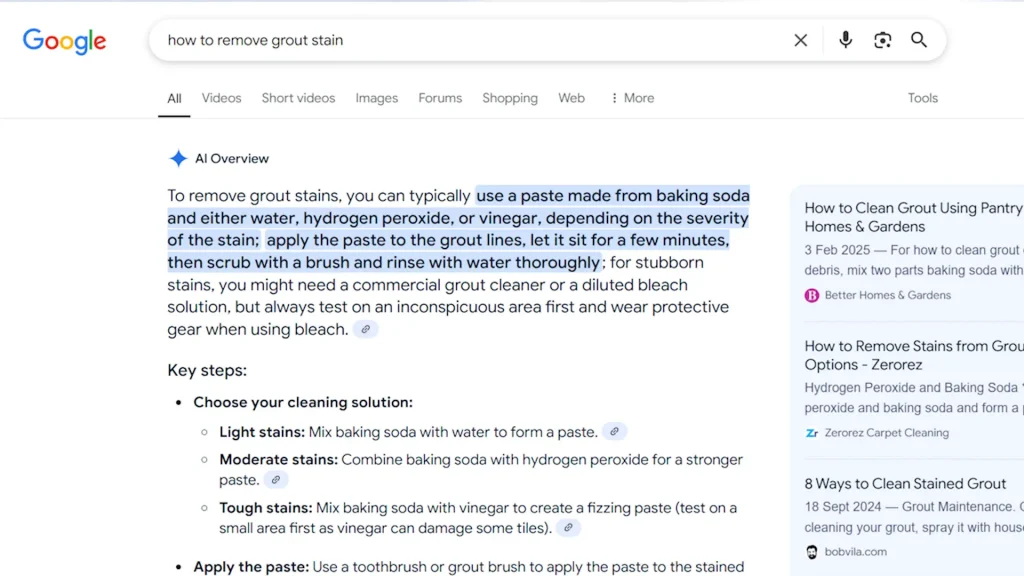
That means: no clicks. No traffic. No chance to sell. Google’s AI already wrote the essay, solved the problem, and probably filed their taxes while it was at it.
According to a study by Bart that analyzed 25,000 ecommerce keywords, 16% of ecommerce queries now trigger AI Overviews. That’s over one in six searches. Kevin from Growth Memo also found that websites cited in these answers receive 8.9% fewer clicks compared to regular organic rankings.

This isn’t a minor shift, it’s a complete transformation in how SEO in e-commerce works. For e-commerce brands, adapting to this new reality isn’t optional.
See Kevin’s Guide on “How to craft a winning SEO strategy.”
Informational vs Commercial: The Key to Beating AI
To beat AI in Shopify SEO, you need to understand what kind of searches trigger it. Let’s break down three example queries:
- “How to remove grout stain” – Informational. Google AI provides full cleaning instructions.
- “Remove grout stain” – Still informational. Again, AI summary takes over.
- “Grout stain remover” – Commercial. Triggers shopping ads and product listings instead.
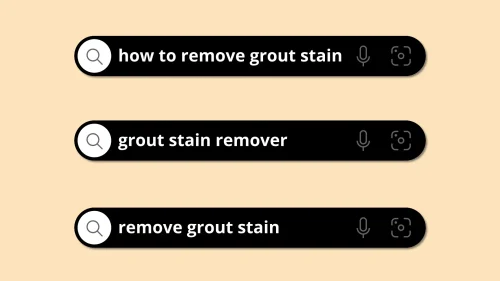
See the difference? Google AI answers questions, it doesn’t sell products. That means informational queries are more likely to be intercepted by AI, while commercial keywords, those with buying intent, still show shopping ads and organic product results.
That’s your Shopify SEO opportunity. If you’re targeting keywords that show shopping ads, you’re more likely to avoid AI Overviews altogether. Your traffic stays intact, and your store stays visible.
Optimizing Shopify Product Pages to Rank for Buyer Keywords
Product Title Optimization
Let’s look at a real example. A store called That’s Awesome is currently ranking 46th for a relevant product keyword. Their title reads:
Tile & Grout Cleaner natural non toxic and environmentally friendly 5 Litre Australian Made
It’s long, unclear, and poorly formatted. Compare that to a competitor title like:
Aqua Mix Cement Grout Haze Remover 946ml
It’s clean, focused, and keyword-rich. A better version for our example might be:
Natural Grout Haze & Stain Remover for Tiles – 5L
Keep titles under 60 characters. Put the most important keywords at the front. Match buyer search terms.
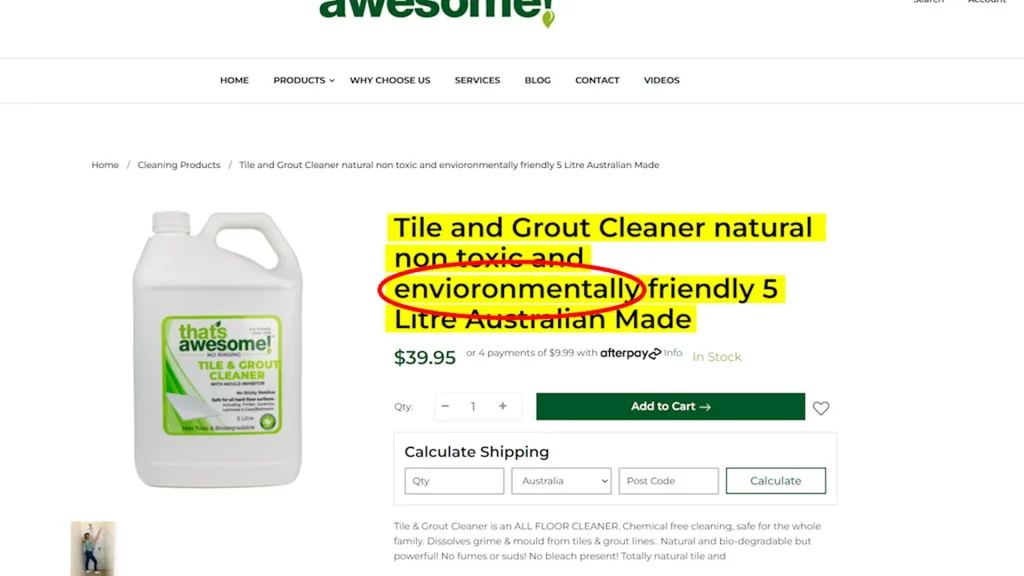
Product Description Cleanup
Many stores have product pages that look like a wall of text. This hurts both conversions and SEO. Customers, and Google, prefer scannable formats.
Use bullet points to highlight key features:
- Enzyme-based formula continues cleaning after application
- Safe for tiles, timber, and lino surfaces
- No-rinse, no sticky residue
For detailed CRO tips, see our Shopify conversion rate guide.
Fixing Internal Links
Another simple yet common mistake: broken internal links. Make sure they point to live, relevant product or collection pages. It’s one of the easiest SEO wins available.
How Schema Markup Beats AI Summaries
Google’s AI can generate summaries, but it can’t display key details like prices, stock status, or star ratings, unless you give it that data. That’s where schema markup becomes your secret weapon.
When used properly, schema can transform a plain blue search result into a rich snippet, like the one shown here. Instead of relying solely on your page title and meta description, Google pulls structured data directly from your site to highlight product-specific information that drives clicks.
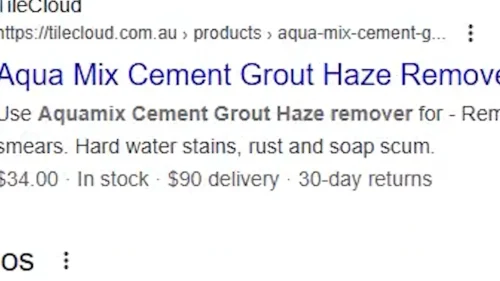
To fix this, install the free schema from my Shopify SEO guide. First, edit your theme. Click the “Snippets” folder, then create a file named schema.liquid. Copy and paste the template code into the new file, it should look something like the screenshot below.
The code includes structured data for breadcrumbs and collections, which helps Google better understand your content. Edit the first line to include your logo URL. Add your social media and Wikipedia links on the second. Then, drop a render call into your theme.liquid just before the closing </head> tag to activate it site-wide.
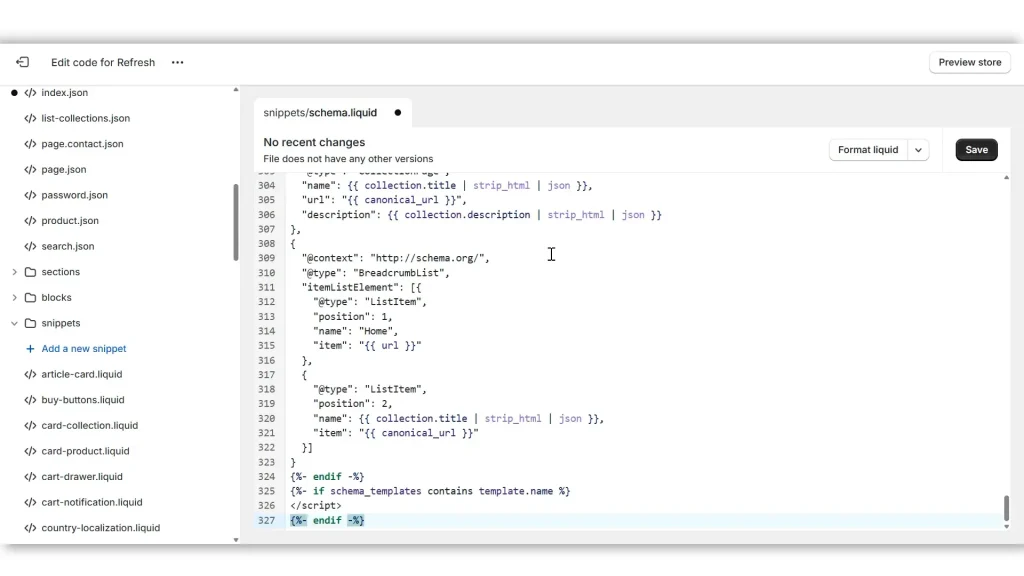
For example, this listing includes:
- Price (e.g. $34.00)
- Stock availability (e.g. “In stock”)
- Delivery cost (e.g. $90 delivery)
- Return policy (e.g. “30-day returns”)
- In some cases, rich snippets can also display:
- Star ratings and customer reviews
- Product images and brand names
- Estimated shipping times
- Variant or SKU information
These enhancements help your product stand out in a crowded results page. They build trust at a glance, increase click-through rates, and give buyers the confidence to visit your store. More importantly, they send strong signals to Google about what your page offers, making it less likely that your content will be pushed aside or replaced by AI-generated summaries in search results.
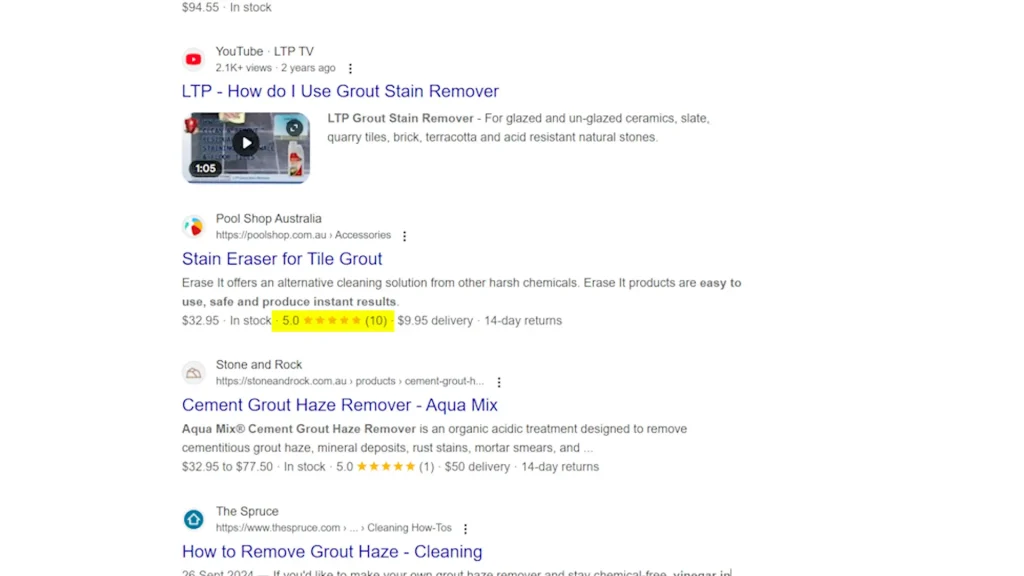
All of this is enabled by proper schema markup. Use Google’s Rich Results Test to check your current setup.
You can also use the free Shopify SEO schema template to apply this markup across your site.
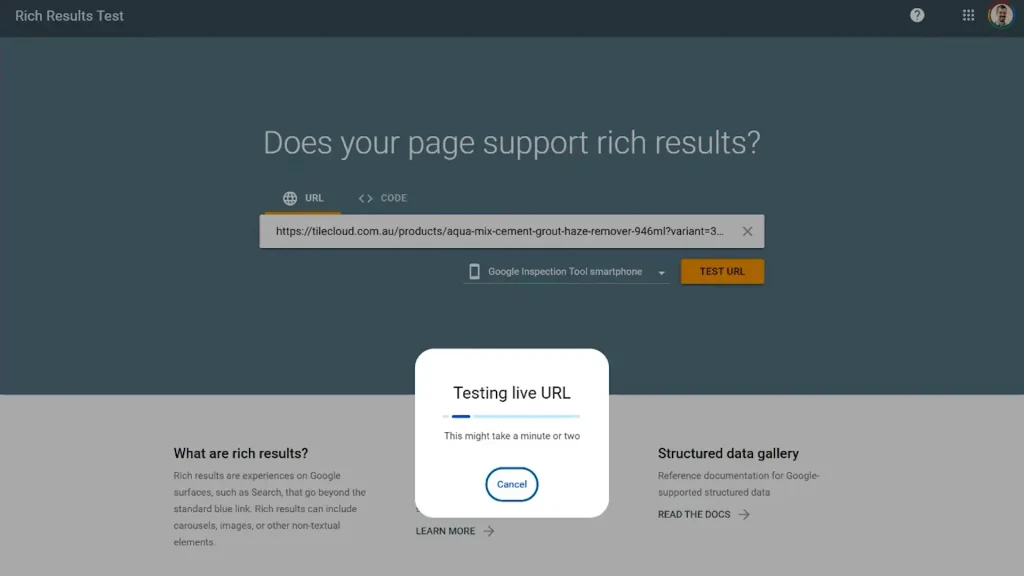
One Last Trick to Beat AI with Free Listings
AI Overviews are taking over more of the search results, but there’s one area they don’t touch: Google Shopping.
Free product listings powered by Google Merchant Center still show up in the Shopping tab and the “Popular Products” carousel, and these results don’t get overwritten by AI summaries.
To appear here, make sure your Merchant Center is fully set up:
- Enable Free Listings in Google Merchant Center
- Add GTINs (barcodes) for all applicable products
- Track conversions with Google Analytics
- Set clear return and shipping policies
- Fully complete your product feed with accurate data
- Connect Google Analytics or GA4 to track performance
Then go through your product feed and fill out every possible detail. Titles, descriptions, pricing, availability – all of it. Google rewards clean, complete data with better placements.
That’s how your products end up in visual placements like the one below, featured as “Popular Products” even without paying for ads.

While AI dominates more of the main SERPs, this is still one of the last free, high-intent opportunities for ecommerce stores to get seen. Most merchants ignore it. Don’t be one of them.
Turn AI Overviews Into Shopify SEO Wins
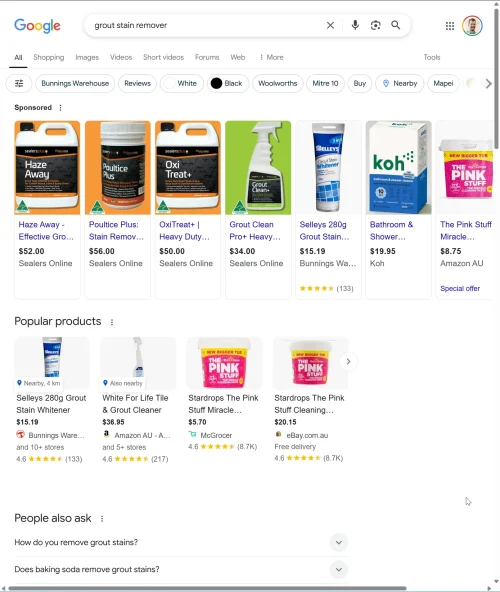
AI in search isn’t going anywhere, but that doesn’t mean your traffic has to disappear.
Yes, Google’s AI Overviews are reshaping search. But with the right strategy, your store doesn’t just survive – it stands out.
By targeting commercial keywords (not just informational ones), optimizing your product pages for real buyer intent, and enhancing your visibility with structured data and Merchant Center listings, you can claim space that AI summaries can’t overwrite. That’s how you stay competitive and keep growing.
Ready To Win Back Your Shopify Traffic From Google’s AI?
Don’t sit back while search changes, adapt faster than your competitors. Join Shopify merchants getting weekly SEO tactics that actually grow revenue.
For more in-depth tactics, see my full Shopify SEO Guide or subscribe to my newsletter for weekly growth strategies.
Liked this article? Get more free Shopify guides:
Enter your primary e-mail address to receive notifications when there are new educating Shopify tutorials and free practical tips to increase sales. You'll also immediately download a 30+ page deck "4 Rules of Store Growth: To Sell More on Shopify, Escape Work You Hate, Boost Profit, and Have a Business You're Proud Of".

